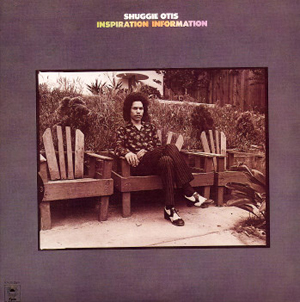1. Shuggie OtisInspiration Information

I learned about this record from the Luaka Bop reissue in 2001, so I subconsciously include ‘Strawberry Letter 23’ on there, which isn’t on the original record but is one of my all-time favourite songs. It’s the same for lots of the classic soul records, but this album in particular has that sense of one person in a studio in this playground – this wonderland – and it’s so euphoric and happy and positive, in that mode of somebody just exploring music and exploring sound. That’s something that really connected with me, because that was very much my perspective of the music I was making at that time. It’s like, "Oh wow, look at what you can do with this sound, with this technique or this piece of music or whatever."
Was this around the time you were making Up In Flames?
Yeah, it was right around this time.
Because that album is so dense and rich and vibrant – you definitely get the sense of an artist in a studio playground having a ball.
The Shuggie Otis for me, in a similar way [to Up In Flames], is like looking through a kaleidoscope – beautiful colours everywhere. And also there are specific things I remember connected to this album. When I was living in Toronto I used to travel around a lot. I was going to university and also working at a different university teaching and I would listen to this all the time. I learnt so much about the craft of making music from it. There’s one point at the end of one of the songs – ‘Island Letter’ – where this incredibly loud Fender Rhodes line comes in, in one ear, or perhaps panned hard to one side. I can remember loving that – it’s so crazily loud, it’s like someone left space to do something totally out of control and ridiculous. A professional mixing engineer would’ve been like, "Oops, turn that down". I’ve used that specific idea with a Fender Rhodes line in a bunch of tracks that I’ve made. That really stuck with me – somebody being really idiosyncratic about what recorded music should be like and how it should communicate.


